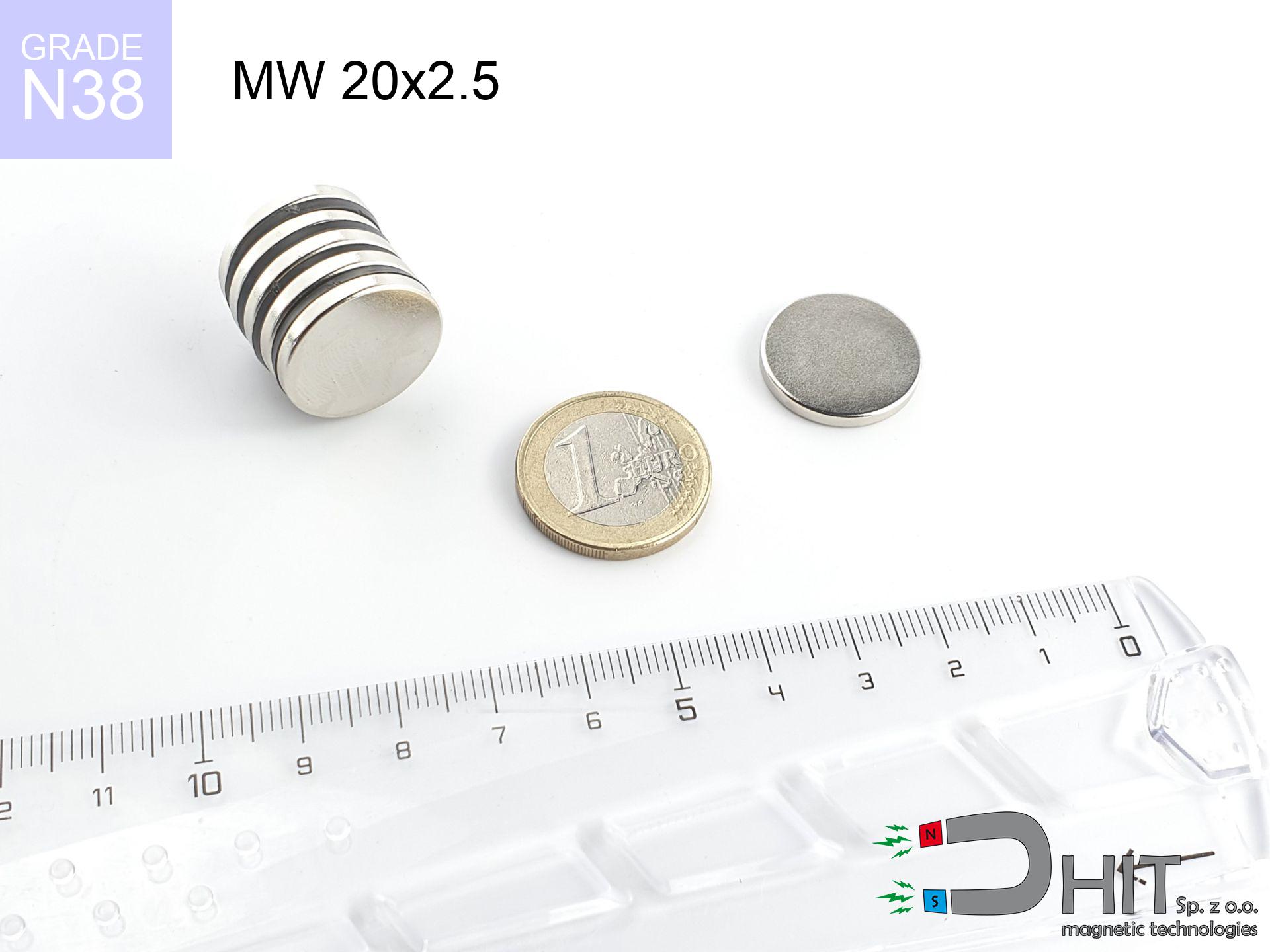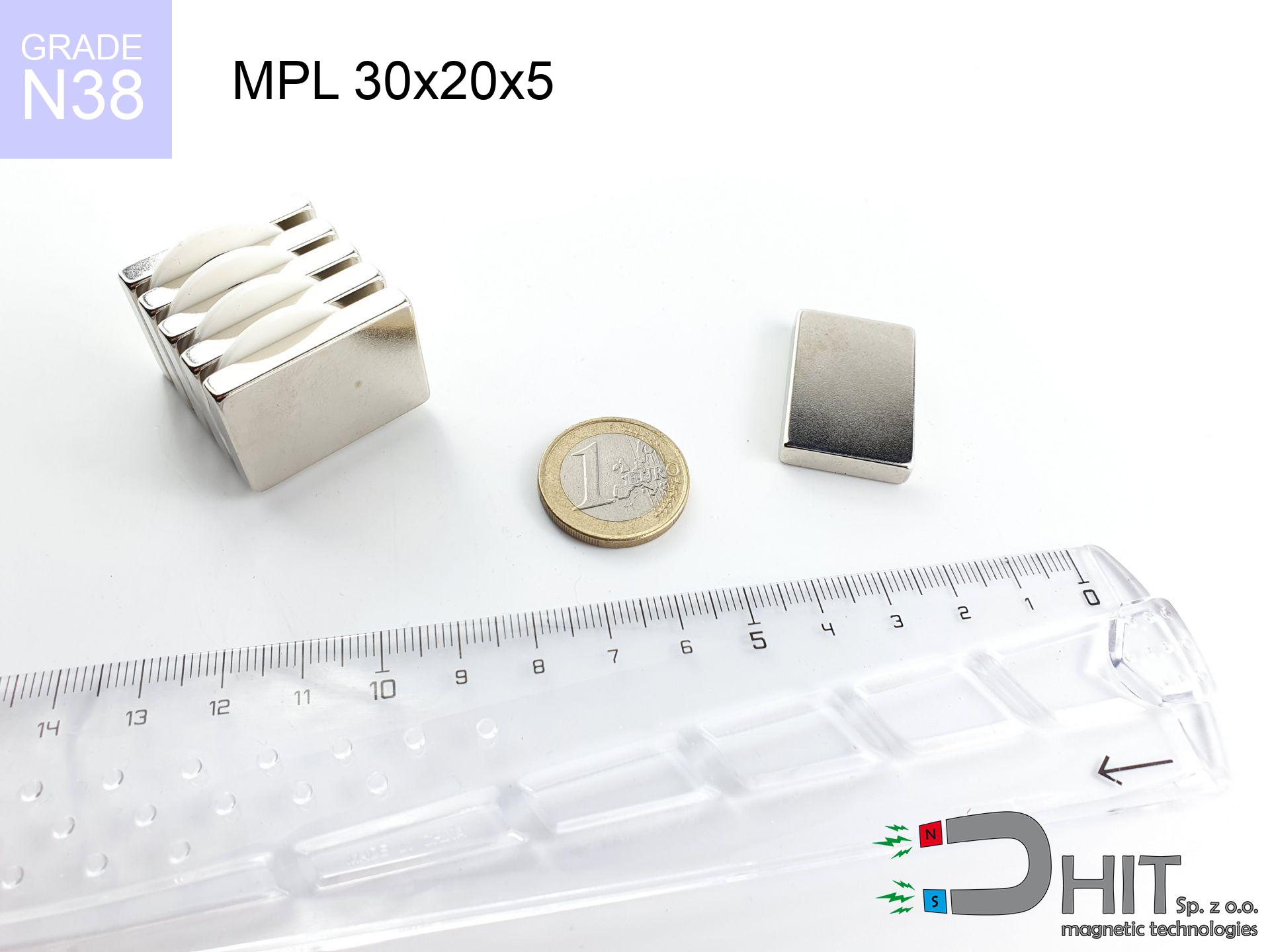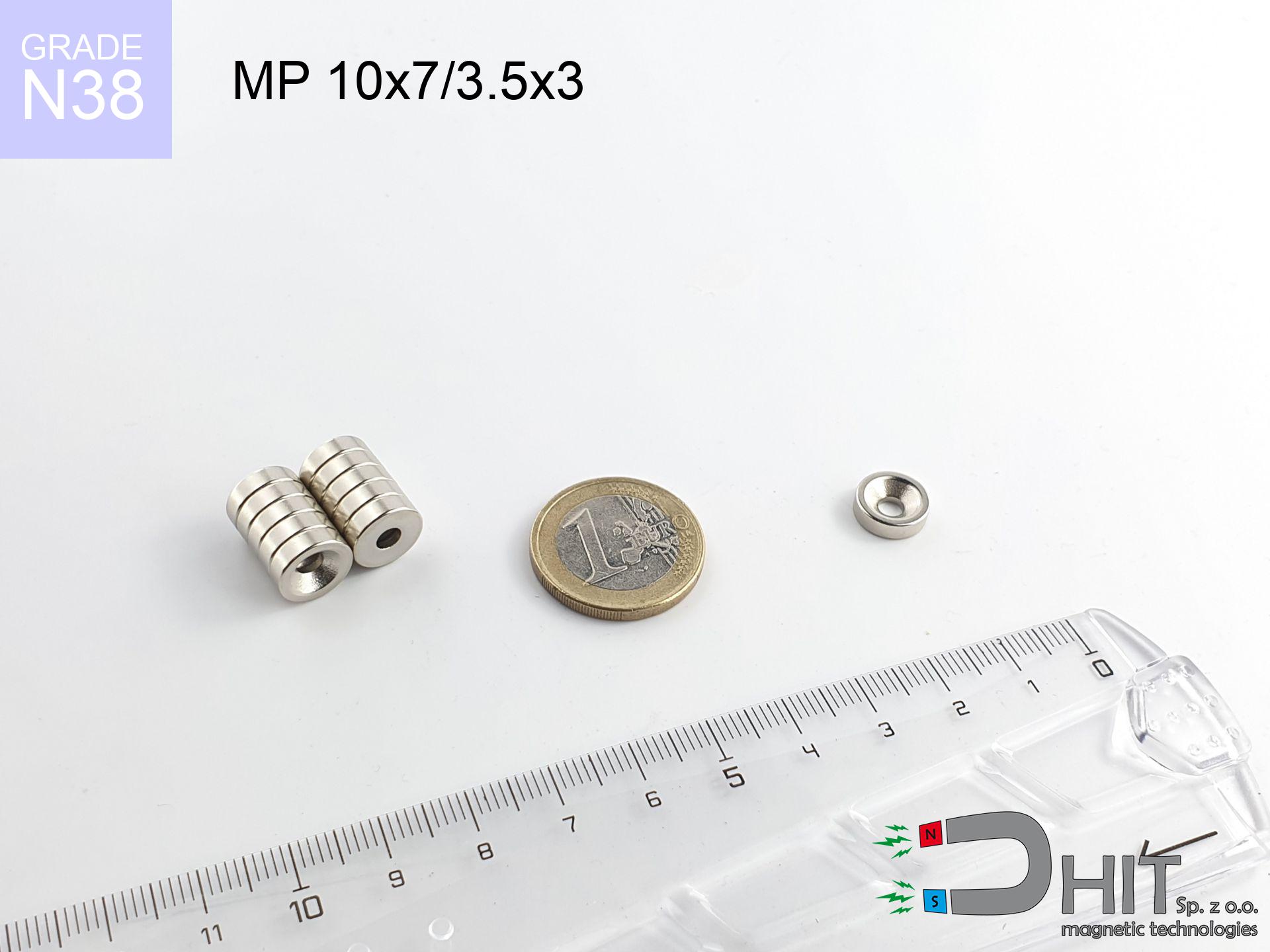UMH 60x15x69 [M8] / N38 - magnetic holder with hook
magnetic holder with hook
Catalog no 310431
GTIN/EAN: 5906301814603
Diameter Ø
60 mm [±1 mm]
Height
69 mm [±1 mm]
Height
15 mm [±1 mm]
Weight
300 g
Magnetization Direction
↑ axial
Load capacity
112.00 kg / 1098.34 N
Coating
[NiCuNi] Nickel
143.91 ZŁ with VAT / pcs + price for transport
117.00 ZŁ net + 23% VAT / pcs
bulk discounts:
Need more?
Pick up the phone and ask
+48 888 99 98 98
alternatively drop us a message through
request form
the contact form page.
Parameters and form of magnets can be analyzed with our
magnetic mass calculator.
Orders placed before 14:00 will be shipped the same business day.
Product card - UMH 60x15x69 [M8] / N38 - magnetic holder with hook
Specification / characteristics - UMH 60x15x69 [M8] / N38 - magnetic holder with hook
| properties | values |
|---|---|
| Cat. no. | 310431 |
| GTIN/EAN | 5906301814603 |
| Production/Distribution | Dhit sp. z o.o. |
| Country of origin | Poland / China / Germany |
| Customs code | 85059029 |
| Diameter Ø | 60 mm [±1 mm] |
| Height | 69 mm [±1 mm] |
| Height | 15 mm [±1 mm] |
| Weight | 300 g |
| Magnetization Direction | ↑ axial |
| Load capacity ~ ? | 112.00 kg / 1098.34 N |
| Coating | [NiCuNi] Nickel |
| Manufacturing Tolerance | ±1 mm |
Magnetic properties of material N38
| properties | values | units |
|---|---|---|
| remenance Br [min. - max.] ? | 12.2-12.6 | kGs |
| remenance Br [min. - max.] ? | 1220-1260 | mT |
| coercivity bHc ? | 10.8-11.5 | kOe |
| coercivity bHc ? | 860-915 | kA/m |
| actual internal force iHc | ≥ 12 | kOe |
| actual internal force iHc | ≥ 955 | kA/m |
| energy density [min. - max.] ? | 36-38 | BH max MGOe |
| energy density [min. - max.] ? | 287-303 | BH max KJ/m |
| max. temperature ? | ≤ 80 | °C |
Physical properties of sintered neodymium magnets Nd2Fe14B at 20°C
| properties | values | units |
|---|---|---|
| Vickers hardness | ≥550 | Hv |
| Density | ≥7.4 | g/cm3 |
| Curie Temperature TC | 312 - 380 | °C |
| Curie Temperature TF | 593 - 716 | °F |
| Specific resistance | 150 | μΩ⋅cm |
| Bending strength | 250 | MPa |
| Compressive strength | 1000~1100 | MPa |
| Thermal expansion parallel (∥) to orientation (M) | (3-4) x 10-6 | °C-1 |
| Thermal expansion perpendicular (⊥) to orientation (M) | -(1-3) x 10-6 | °C-1 |
| Young's modulus | 1.7 x 104 | kg/mm² |
Material specification
| iron (Fe) | 64% – 68% |
| neodymium (Nd) | 29% – 32% |
| boron (B) | 1.1% – 1.2% |
| dysprosium (Dy) | 0.5% – 2.0% |
| coating (Ni-Cu-Ni) | < 0.05% |
Environmental data
| recyclability (EoL) | 100% |
| recycled raw materials | ~10% (pre-cons) |
| carbon footprint | low / zredukowany |
| waste code (EWC) | 16 02 16 |
Check out also deals
Pros as well as cons of rare earth magnets.
Strengths
- Their power is durable, and after around 10 years it decreases only by ~1% (according to research),
- Magnets very well resist against loss of magnetization caused by ambient magnetic noise,
- The use of an metallic coating of noble metals (nickel, gold, silver) causes the element to be more visually attractive,
- Magnets possess excellent magnetic induction on the active area,
- Made from properly selected components, these magnets show impressive resistance to high heat, enabling them to function (depending on their shape) at temperatures up to 230°C and above...
- Possibility of precise forming and adapting to precise applications,
- Universal use in electronics industry – they find application in hard drives, drive modules, diagnostic systems, also industrial machines.
- Thanks to efficiency per cm³, small magnets offer high operating force, occupying minimum space,
Limitations
- Susceptibility to cracking is one of their disadvantages. Upon intense impact they can fracture. We recommend keeping them in a special holder, which not only secures them against impacts but also raises their durability
- Neodymium magnets decrease their strength under the influence of heating. As soon as 80°C is exceeded, many of them start losing their force. Therefore, we recommend our special magnets marked [AH], which maintain durability even at temperatures up to 230°C
- They rust in a humid environment. For use outdoors we advise using waterproof magnets e.g. in rubber, plastic
- Due to limitations in creating nuts and complex shapes in magnets, we propose using cover - magnetic holder.
- Possible danger resulting from small fragments of magnets can be dangerous, in case of ingestion, which gains importance in the context of child safety. It is also worth noting that small elements of these devices can complicate diagnosis medical when they are in the body.
- With budget limitations the cost of neodymium magnets can be a barrier,
Holding force characteristics
Magnetic strength at its maximum – what contributes to it?
- on a block made of structural steel, effectively closing the magnetic flux
- with a cross-section no less than 10 mm
- with a plane perfectly flat
- without any clearance between the magnet and steel
- for force applied at a right angle (pull-off, not shear)
- at standard ambient temperature
Practical aspects of lifting capacity – factors
- Gap (betwixt the magnet and the metal), because even a very small clearance (e.g. 0.5 mm) results in a drastic drop in lifting capacity by up to 50% (this also applies to varnish, rust or dirt).
- Force direction – note that the magnet holds strongest perpendicularly. Under sliding down, the capacity drops significantly, often to levels of 20-30% of the nominal value.
- Metal thickness – the thinner the sheet, the weaker the hold. Part of the magnetic field passes through the material instead of converting into lifting capacity.
- Material type – the best choice is high-permeability steel. Hardened steels may have worse magnetic properties.
- Surface structure – the smoother and more polished the plate, the better the adhesion and higher the lifting capacity. Roughness acts like micro-gaps.
- Operating temperature – neodymium magnets have a negative temperature coefficient. At higher temperatures they lose power, and in frost gain strength (up to a certain limit).
Lifting capacity testing was conducted on plates with a smooth surface of optimal thickness, under a perpendicular pulling force, whereas under parallel forces the load capacity is reduced by as much as 5 times. Moreover, even a slight gap between the magnet and the plate reduces the holding force.
Safety rules for work with NdFeB magnets
Dust explosion hazard
Machining of NdFeB material poses a fire hazard. Neodymium dust reacts violently with oxygen and is difficult to extinguish.
No play value
NdFeB magnets are not intended for children. Accidental ingestion of multiple magnets can lead to them pinching intestinal walls, which constitutes a direct threat to life and requires urgent medical intervention.
Crushing force
Protect your hands. Two large magnets will snap together instantly with a force of massive weight, crushing anything in their path. Be careful!
Powerful field
Handle with care. Neodymium magnets attract from a distance and connect with massive power, often quicker than you can react.
Permanent damage
Watch the temperature. Heating the magnet above 80 degrees Celsius will ruin its properties and pulling force.
Danger to pacemakers
People with a pacemaker must keep an safe separation from magnets. The magnetism can interfere with the functioning of the life-saving device.
Skin irritation risks
Some people experience a contact allergy to nickel, which is the typical protective layer for neodymium magnets. Frequent touching may cause an allergic reaction. We suggest wear protective gloves.
GPS Danger
Note: neodymium magnets produce a field that confuses precision electronics. Maintain a safe distance from your mobile, tablet, and navigation systems.
Safe distance
Do not bring magnets close to a purse, computer, or TV. The magnetic field can destroy these devices and erase data from cards.
Risk of cracking
Despite metallic appearance, the material is brittle and not impact-resistant. Avoid impacts, as the magnet may shatter into hazardous fragments.

![Magnet with hook UMH 60x15x69 [M8] / N38 Magnet with hook UMH 60x15x69 [M8] / N38](https://cdn3.dhit.pl/graphics/banners/magnet.webp)
![UMH 60x15x69 [M8] / N38 - magnetic holder with hook](https://cdn3.dhit.pl/graphics/products/umh-60x15x69-m8-nij.jpg)
![UMH 60x15x69 [M8] / N38 - magnetic holder with hook - ujęcie 2](https://cdn3.dhit.pl/graphics/products/umh-60x15x69-m8-nuh.jpg)





